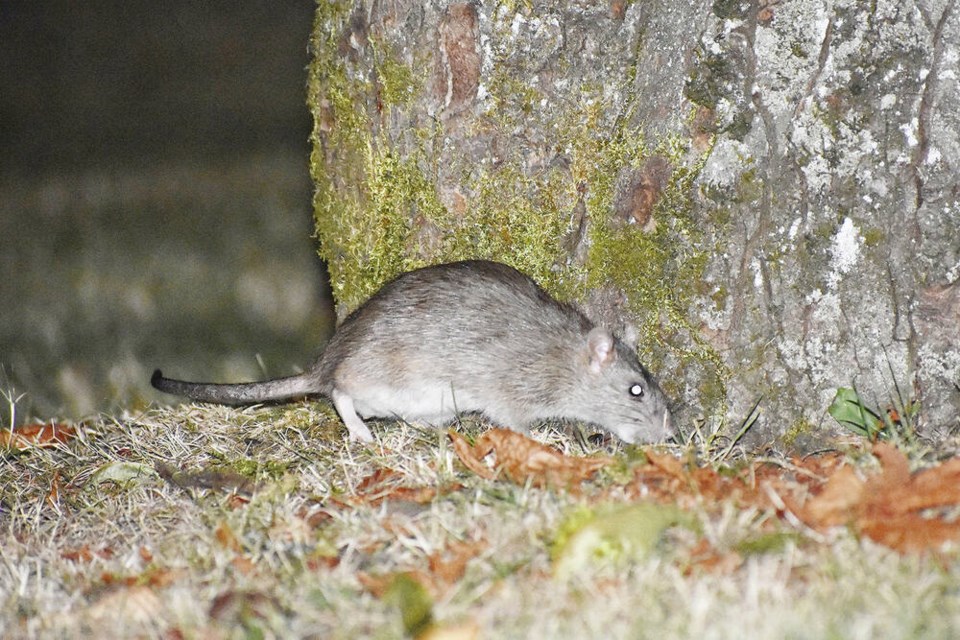Scientists believe we have identified and described only a small fraction of our planet’s living creatures. What with 800 streaming services and e-scooters in our bike lanes and other distractions, biologists have only gotten around to documenting 1.5 million animal species.
Admittedly, quite a few of those 1.5 million species are on the “icky” side of the spectrum, creatures that may be fascinating and important to the ecosystem, but are unlikely to be cuddled and taught to roll over. Most (1.05 million) are insects, followed by 113,000 species of molluscs, like clams and garden snails, and 110,000 species of arachnids, like spiders and ticks.
A mere 65,000 species are vertebrates — animals with backbones — such as hummingbirds and Labradoodles and junior high school principals. Right now, two of those — the two most successful vertebrate species on the entire planet — are in a bit of a tussle at my house, and maybe at yours, too.
One provides food and shelter, and the other takes it all in exchange for poop and chaos. The two species at the centre of this standoff are, of course, humans and rats.
I suspect you are familiar with the basic Homo sapiens model, even if you have not bothered to read the entire manual, so let’s skip over to the rat.
takes a fairly positive view of rats, noting simply that rats are medium-sized rodents with a long tail. I fear this description omits two critical details: First, rats grow to 45 centimetres from the tip of the nose to the end of that long tail, which is HALF A METRE! Second, there’s probably one behind you right now.
NGK breezily says rats are mainly nocturnal and live underground, ignoring how close that description matches Dante’s account of Inferno, and cheerily notes that although rats outnumber humans, we rarely see them because they are experts at staying out of sight. Let me point out this is most people’s conception of serial killers, not friendly fellow vertebrates like the .
In a long list of impressive facts, NGK only mentions one negative: A single rat can leave 25,000 “droppings” per year. NGK omits mentioning how rats carry a wide variety of diseases and that rats have very sharp teeth that can even chew through metal, causing significant damage to buildings and electrical wiring.
I’m going to go out on a limb here and say it: I don’t like rats. I especially don’t like the rats skulking about my property, leaving behind some of those 25,000 droppings on the patio furniture.
In January 2023, B.C. prohibited the sale and use of a class of pretty effective rat poisons known as second-generation anticoagulant rodenticides (SGARs). These poisons are way more killy than other forms of rat control, such as individually beating them to death with your fists. Unfortunately, SGARs are a little too killy, because wildlife that eat rodents can also die from the poison.
This puts me in a bit of a bind. While I hate and fear rats and want them to die gruesome, lingering deaths, I am a big fan of rat-eating hawks and other birds of prey, especially owls. (Full disclosure: Sovka is a west-Slavic name, where “sova” is the Czech word for owl, and “ka” is a modifier that means little. Yes, little owl. No, the irony is not lost on me.)
The City of Vancouver says there were 1,174 cases involving rodents reported to their complaint hotline last year, 1,249 calls in 2022, and 1,175 in 2021, although those numbers include all mentions of rodents, including rats, mice and those charity mugger people (chuggers?) with clipboards on Granville Street who keep asking for money.
I don’t know if those numbers indicate an official infestation, but I do know Vancouver is one of three B.C. cities (along with Burnaby and Kelowna) in Canada’s top five “rattiest,” as compiled by the good people at Orkin Canada, who also noted , such as — I swear I am not making any of this up — “cannibalism, street fights and territorialism.”
Believe it or not, rats are not native to British Columbia. The two species of rats here now — the Norway rat (Rattus norvegicus) and the roof rat (Rattus rattus) — were brought over in the mid-1800s by explorers and traders, along with other fine examples of European culture such as Camembert cheese and syphilis.
To be fair, Europeans brought over loads of helpful animals used for food, clothing, transportation and sports team mascots. Examples include horses, cattle, sheep, chickens and honeybees. For the most part, these animals exist contentedly alongside us, making our lives better and more delicious.
Unfortunately, rats exist a little too contentedly. Rats are what biologists call “dirty little buggers,” which is science talk for them being prodigious breeders. Under ideal conditions, female rats have six litters a year of up to 12 rat pups. By “ideal conditions” biologists mean “pretty much anywhere on or near planet Earth.”
Each of those rat pups reaches sexual maturity after nine weeks, meaning that a population can swell from two rats to 1,250 in one year. Honestly, it’s a wonder that we’re not knee deep in rats, because if you do the math a single breeding pair could theoretically produce nearly half a billion descendants in three years.
Fortunately, a number of natural factors stop a rat population from spiralling out of control:
• Predation (being eaten by owls).
• Lack of shelter (like most British Columbians).
• Disease.
• The good people at Orkin Canada.
This a good example of the Golden Mean — the desirable middle between two extremes — that Plato and Aristotle were on about. On one hand we have territorial, street-fighting cannibal rats AND Donald Trump to worry about; and on the other I’m spending quality time in the shop with my grandson Niko, building poison-free rat traps.
>>> To comment on this article, write a letter to the editor: [email protected]




